Once upon a random social media post, I came across something about ‘sweat room’ of Leiden University.
It sounded … 🤔
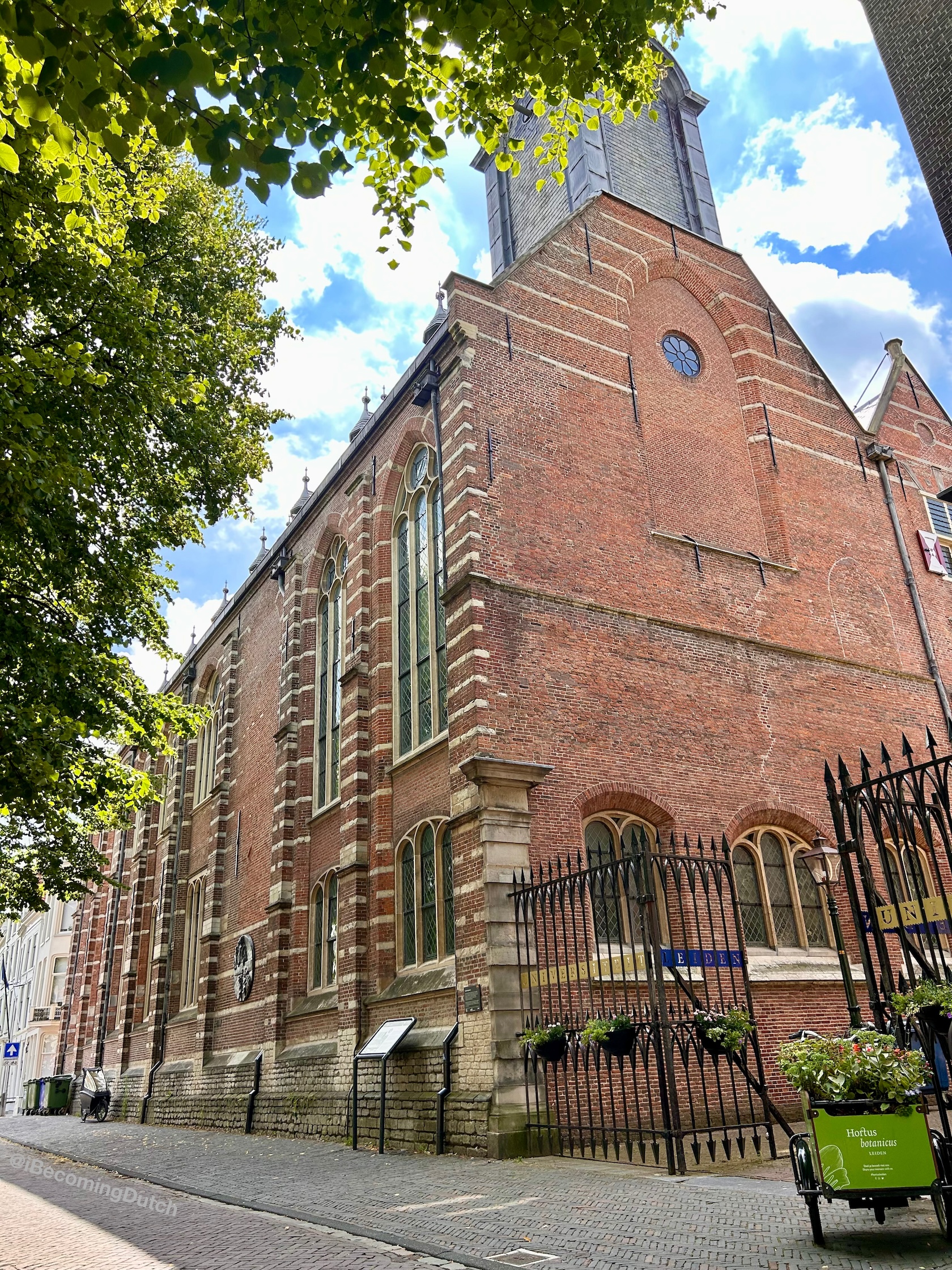

According to history,
Academia Lugduno Batava or Leiden University was founded by William of Orange in 1575, in recognition of the city’s courageous resistance against the siege by the Spanish invaders. Thus, making it the oldest university in the Netherlands.
The Academy Building or Academiegebouw situated on the Rapenburg is the earliest of Leiden University buildings. This structure was formerly the Chapel of the Convent of the White Nun consecrated in 1516 and was acquired by the institution in 1581. It houses the famous Sweat Room or Zweetkamertje in Dutch, a small chamber on the first floor.
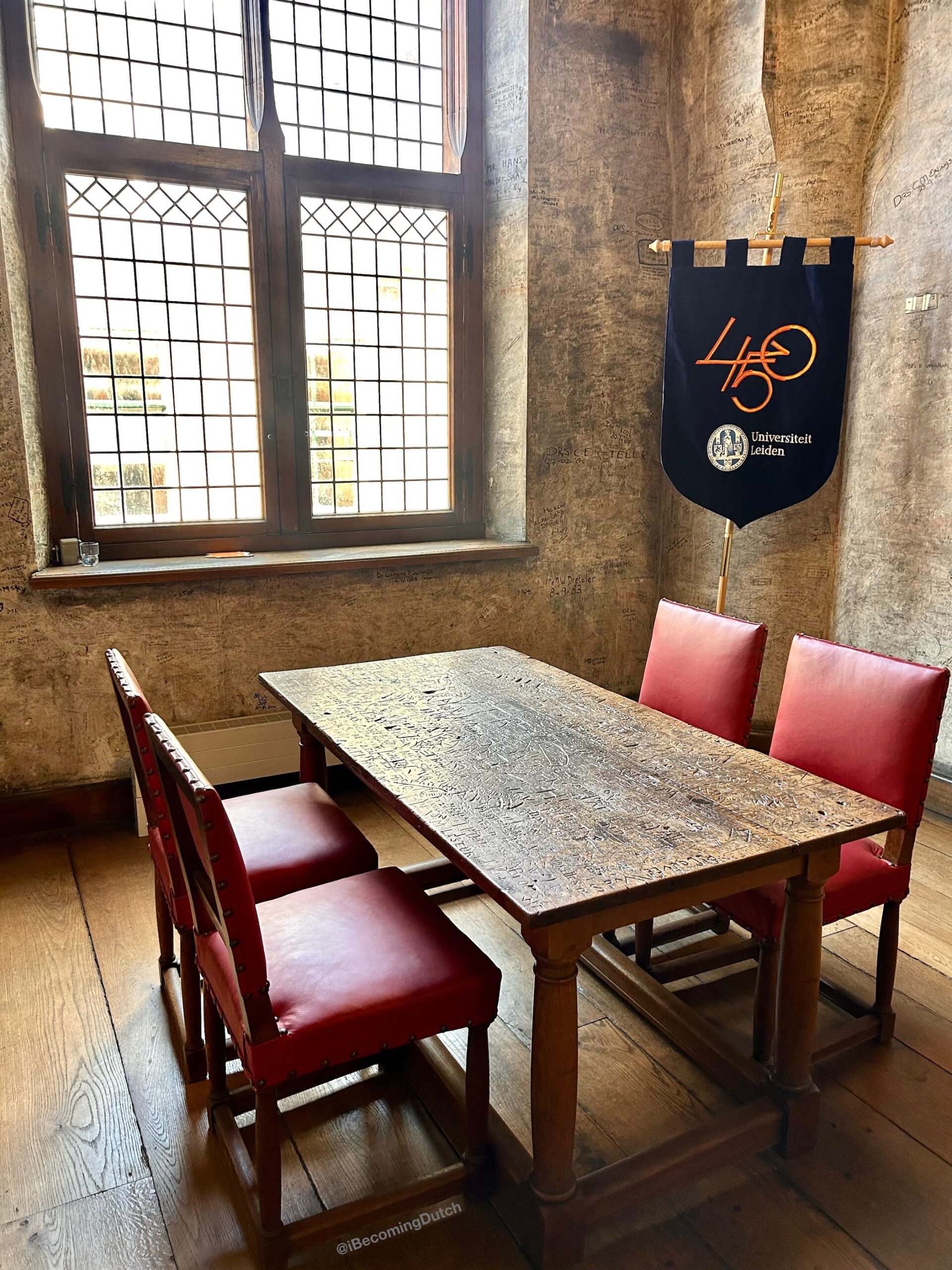
Why is it called the Sweat Room? Because graduates used to wait within the four walls anxiously for their final examination results, defending their theses and dissertations. Therefore, the name Sweat Room, has been used since the 18th century.
Then someone started doodling on the wall!
There was a time when this space was a meeting room for the curators, a storage area to stockpile peat traditionally burned to keep heating the university’s furnaces and later, became a senate chamber for administering exams.

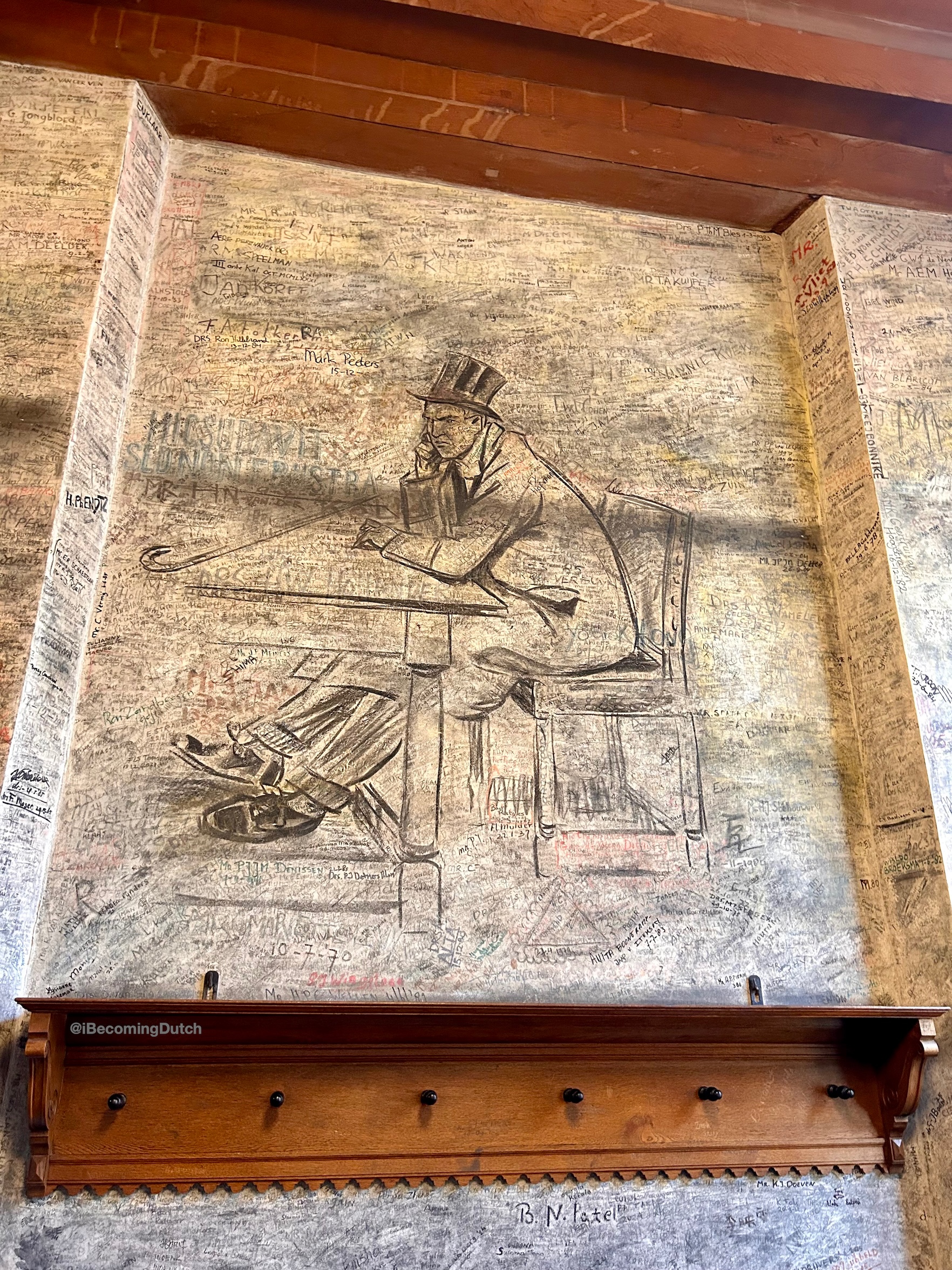
In 1865, Victor Louis de Stuers (1843-1916) was a law student, and he let himself be locked up in the Academy Building overnight. He sketched in charcoal a number of scenes from the life of a Leiden student, the Gradus ad Parnassum. He did the drawings outside the Sweat Room entrance; drawing of a student waiting on the right side, while a student passed his exams on the other, as well as the text taken from Dante’s Inferno above the door; “Lasciate ogni Sperenza; voi che entrate“, translated to “Abandon All Hope, Ye Who Enter Here”.
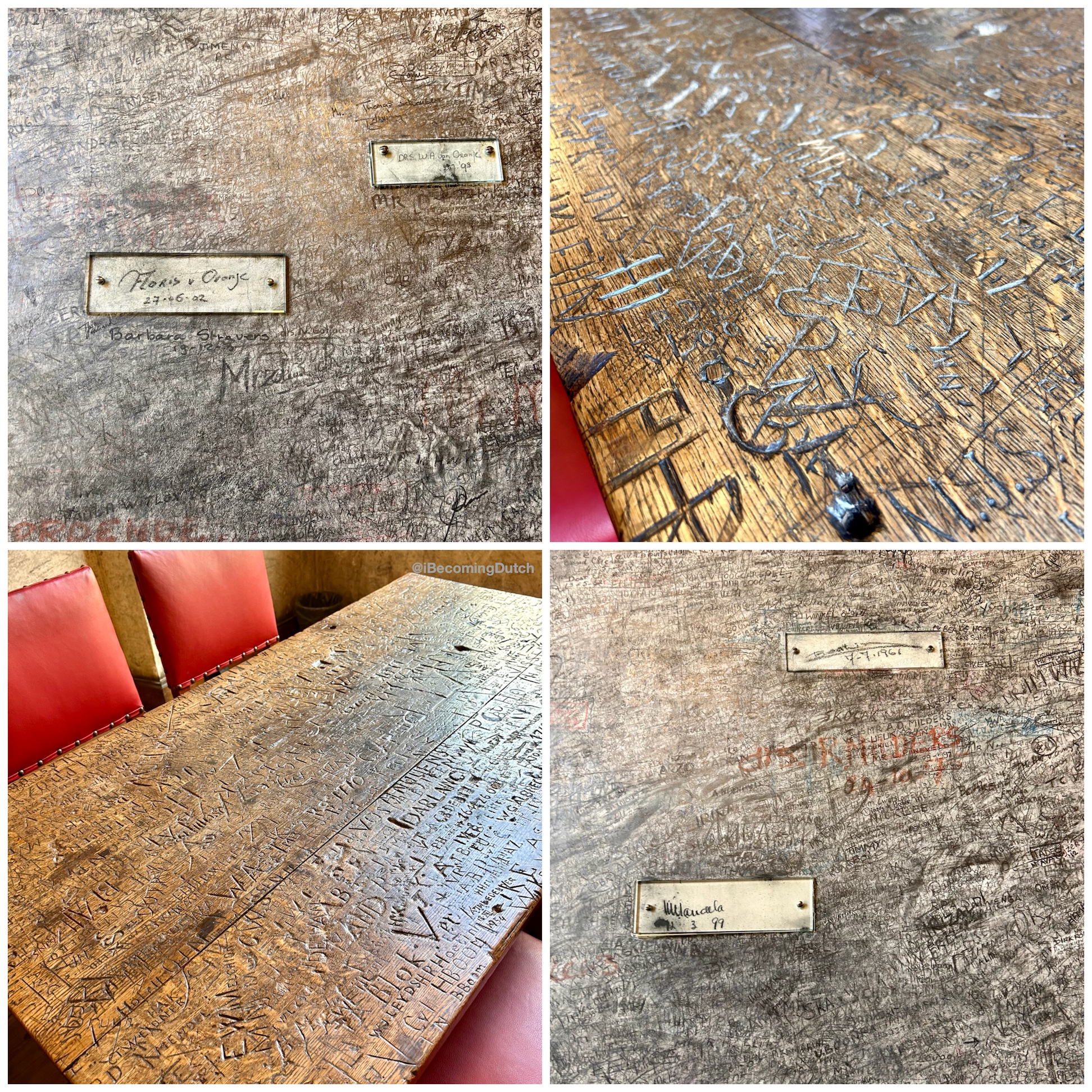
Inside the Sweat Room, there are thousands of names and/or signatures on all sides of the walls. The renowned signatures include Princess Beatrix, Queen Juliana, King Willem-Alexander and recipients of honorary Leiden doctorates comprising of Sir Winston Churchill and Nelson Mandela. These inscriptions are protected under glass plates.
Another notable charcoal drawing, man with top hat, made by Louis Raemaekers in 1919, wrote: “hic sudavit sed non frustra” means No One Sweats Here in Vain.
When the plaster in the Sweat Room was coming loose and cracks were visible on the walls, many of the Leiden alumni’s signatures were in danger of being lost. In May 2014, a crowdfunding campaign successfully raised the needed sum of €16.000+ within a week, with the support of the alumni. Walls were restored to their original state and all signatures were preserved for many years to come.
Immortalising your name in the ‘Sweat Room’ after receiving your master or doctoral degree from Leiden University has become a famous tradition! A bucket list, maybe?
With the present technology, you can visit the Sweat Room online: https://hetzweetkamertje.nl/en (try zooming in!)
Discover or search among all the (famous) signatures.
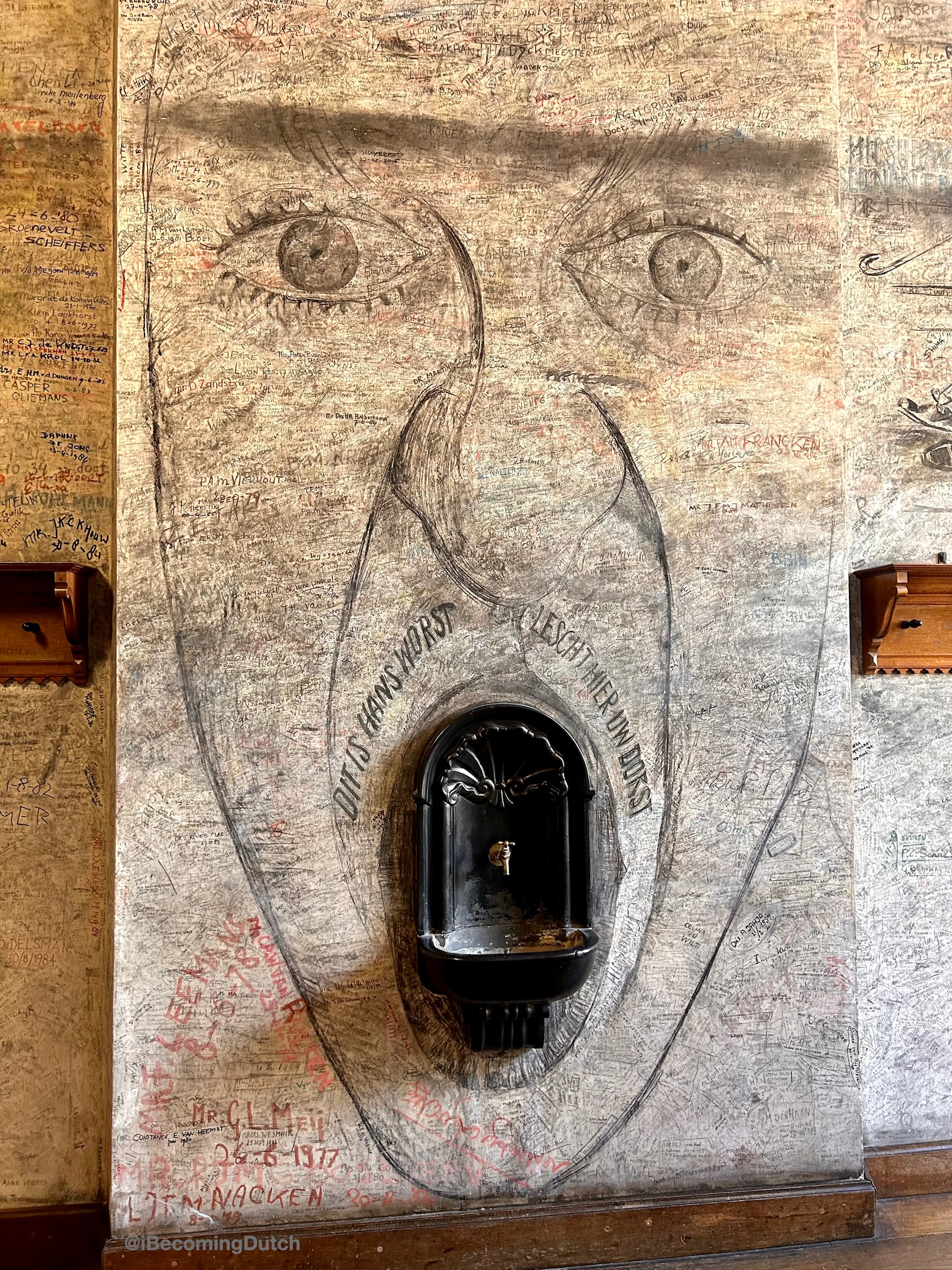
So, the Sweat Room is not generally open to the public. It is accessible during special events or you can make an appointment to visit, if you are an alumnus. I was lucky to be able to join a guided tour during the last summer opening. That enabled me the chance to peek into several other famous and celebrated rooms.
One fascinating room was the Senate Room, created in 1735. It is right next to the Sweat Room where PhD candidates are called to defend their dissertations, standing by a table, below William of Orange’s portrait. The chamber was decorated by the painter Hieronymus van der Meij. The dramatic chimney-breast mantelpiece is filled with coats of arms and featuring William’s painting, which was a reproduction. The cabinets in the rear wall were designed to hold the Senate’s archives. As if it were not intimidating enough, the entire room is adorned with portraits of the most distinguished professors since the foundation of the university!
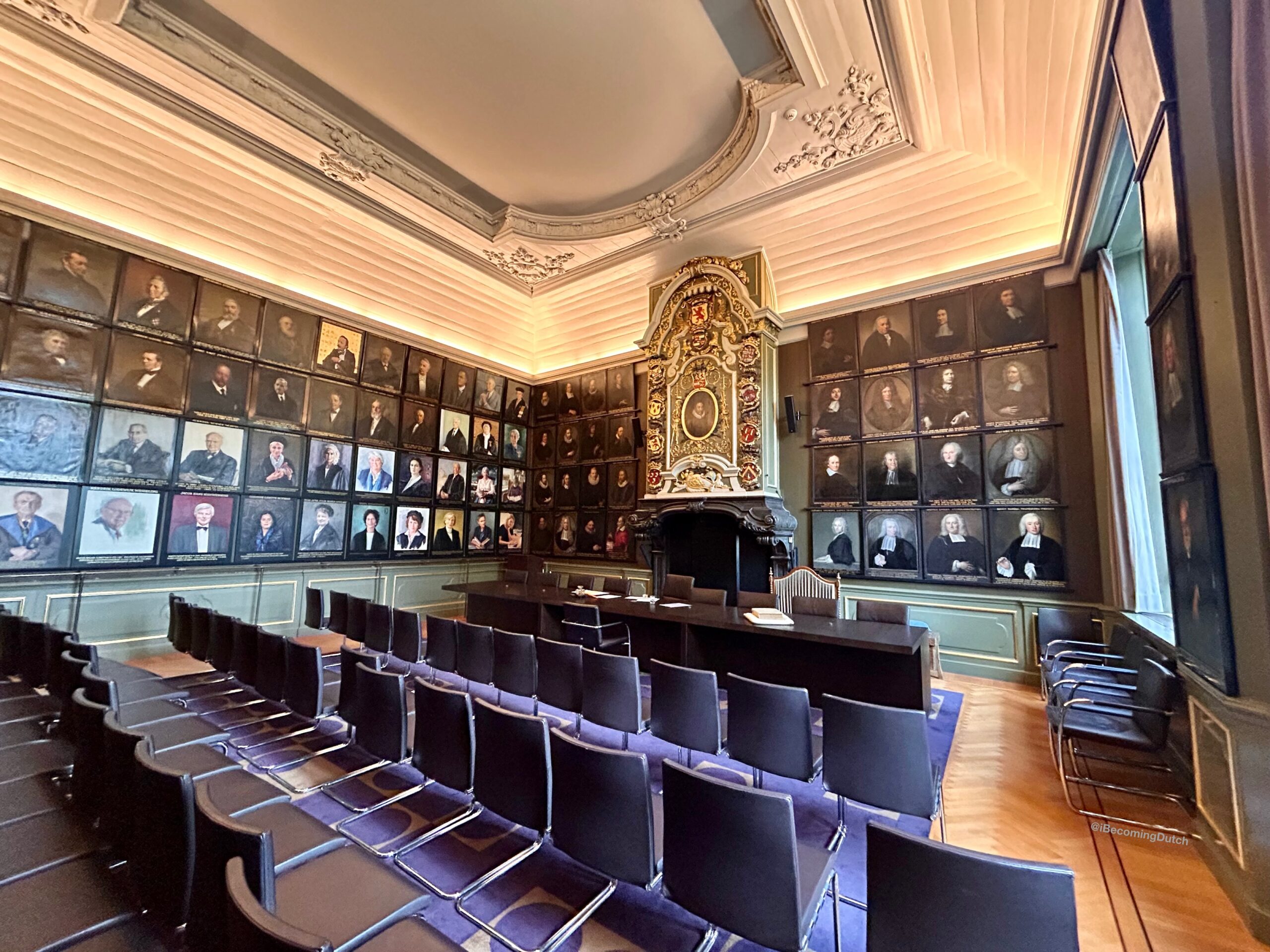
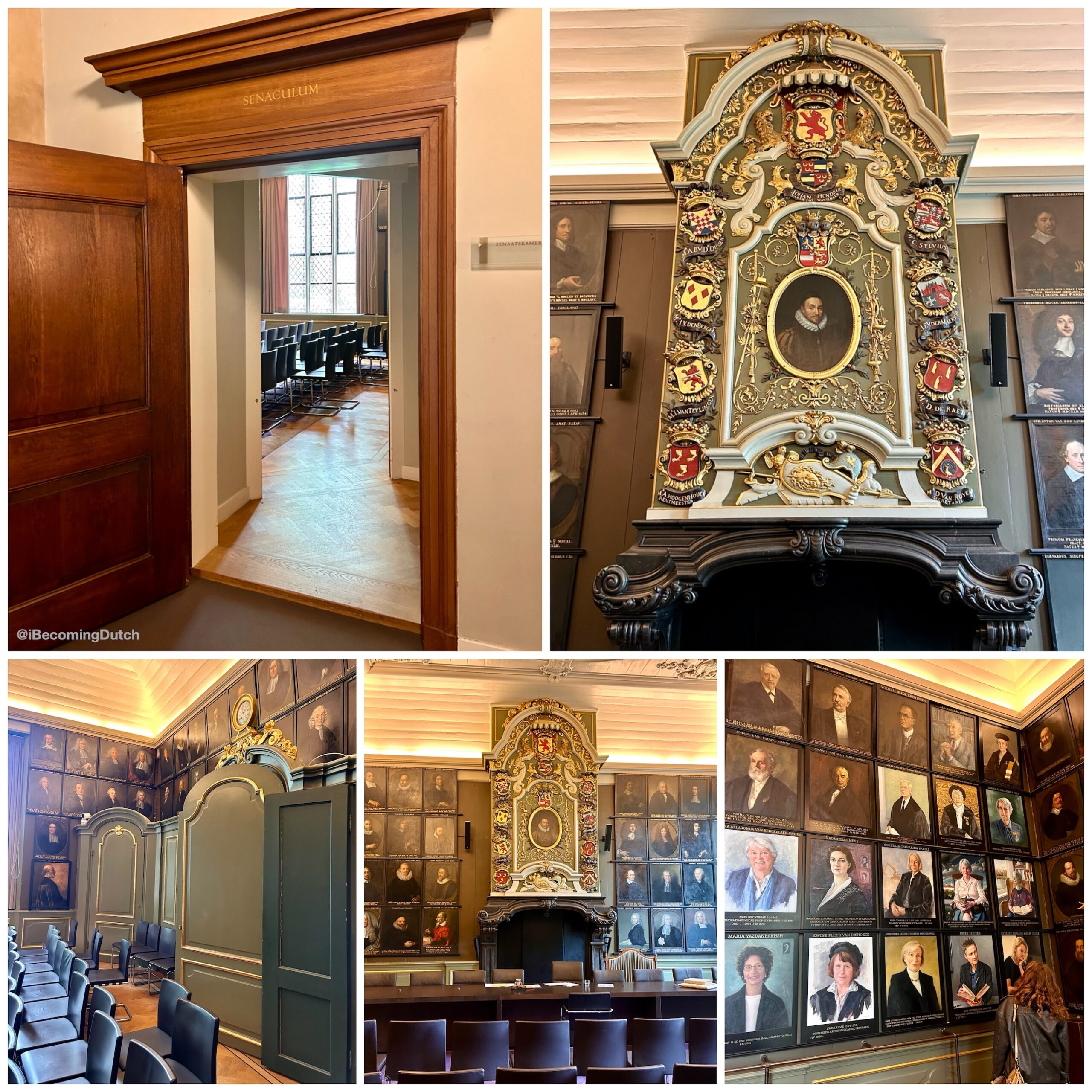
This gallery hangs the portraits of the most celebrated academics, dominated by a male stronghold for four centuries. A portrait must be painted by a reputable artist and allocation of a spot only after their death. There were 118 portraits of male professors hanging here until 1929. Sophia Antoniadis (1895 – 1972) was the first female professor of Humanities (Medieval and Modern Greek) in the Netherlands and the first female professor at Leiden University. She was added to the gallery wall. A female and she was very much alive at the time. The tradition was broken.
Next was the gown room simply called the Toga Kamer. The room is full of countless black gown covers on racks, numbered and bearing the names of the professors. Estimated around 700 gowns are in storage.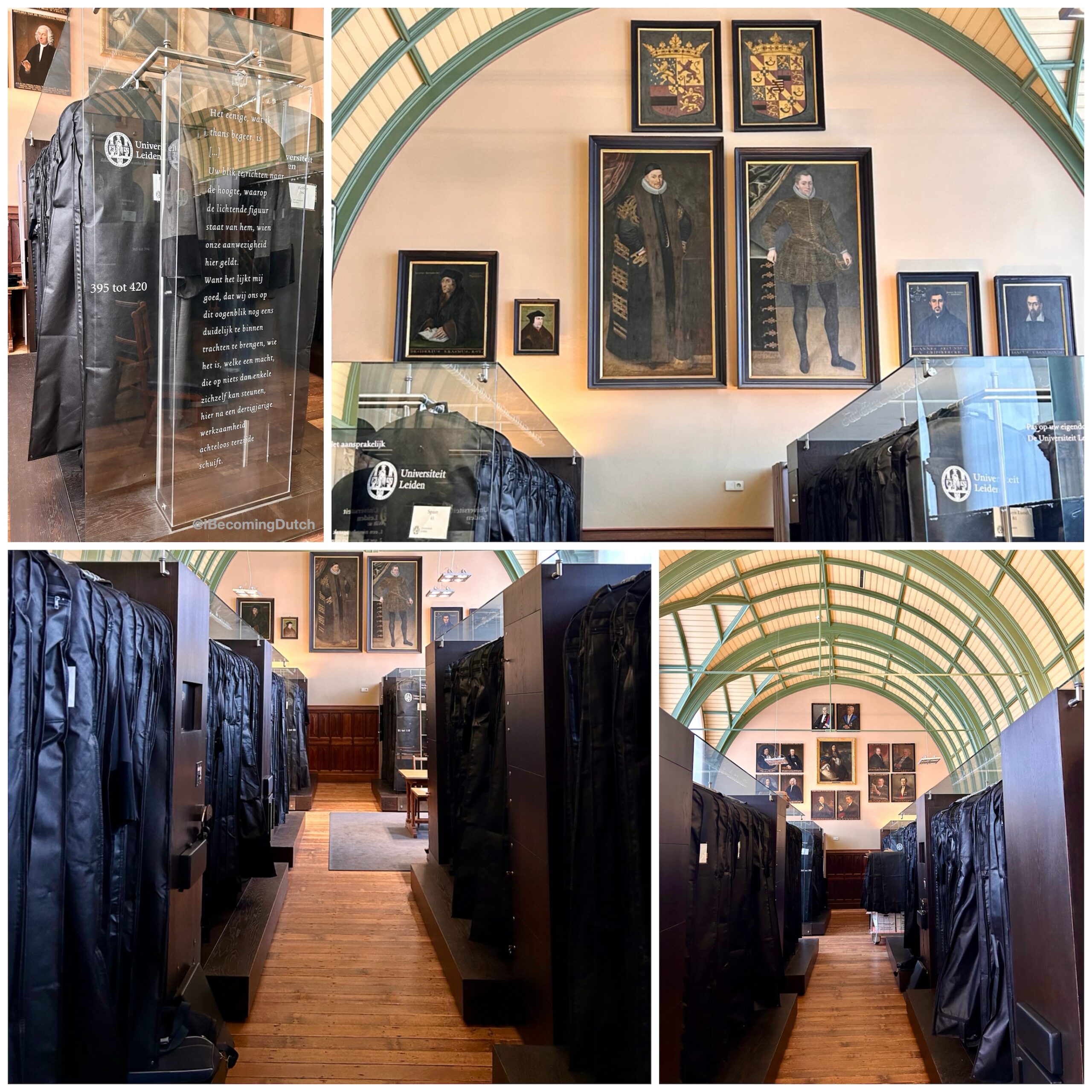
Wearing an academic dress has been part of Leiden University’s tradition. A custom-made gown made to fit your body and personality. A Professor’s Gown is manufactured from fabrics of the highest quality, with silk linings and velvet, realised with extreme precision and craftsmanship. It could cost up to a thousand of Euros. A very quiet chamber.
Other than the above, I was able to admire more charcoal drawings along the stairs and venture the Great Auditorium, Telders Auditorium, Sculpture Garden and the Office of the Beadle, which organises and hosts PhD ceremonies and inaugural lectures. 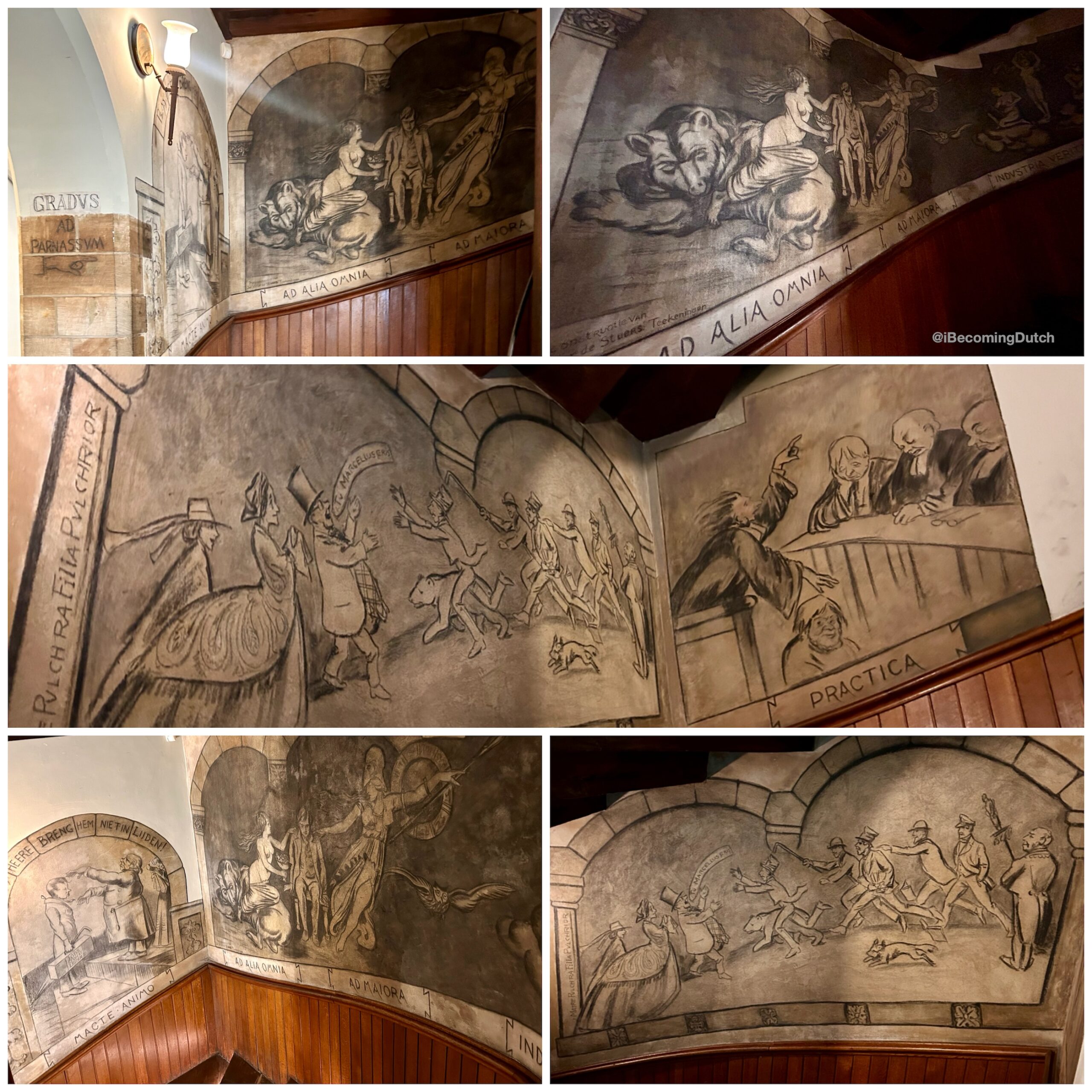
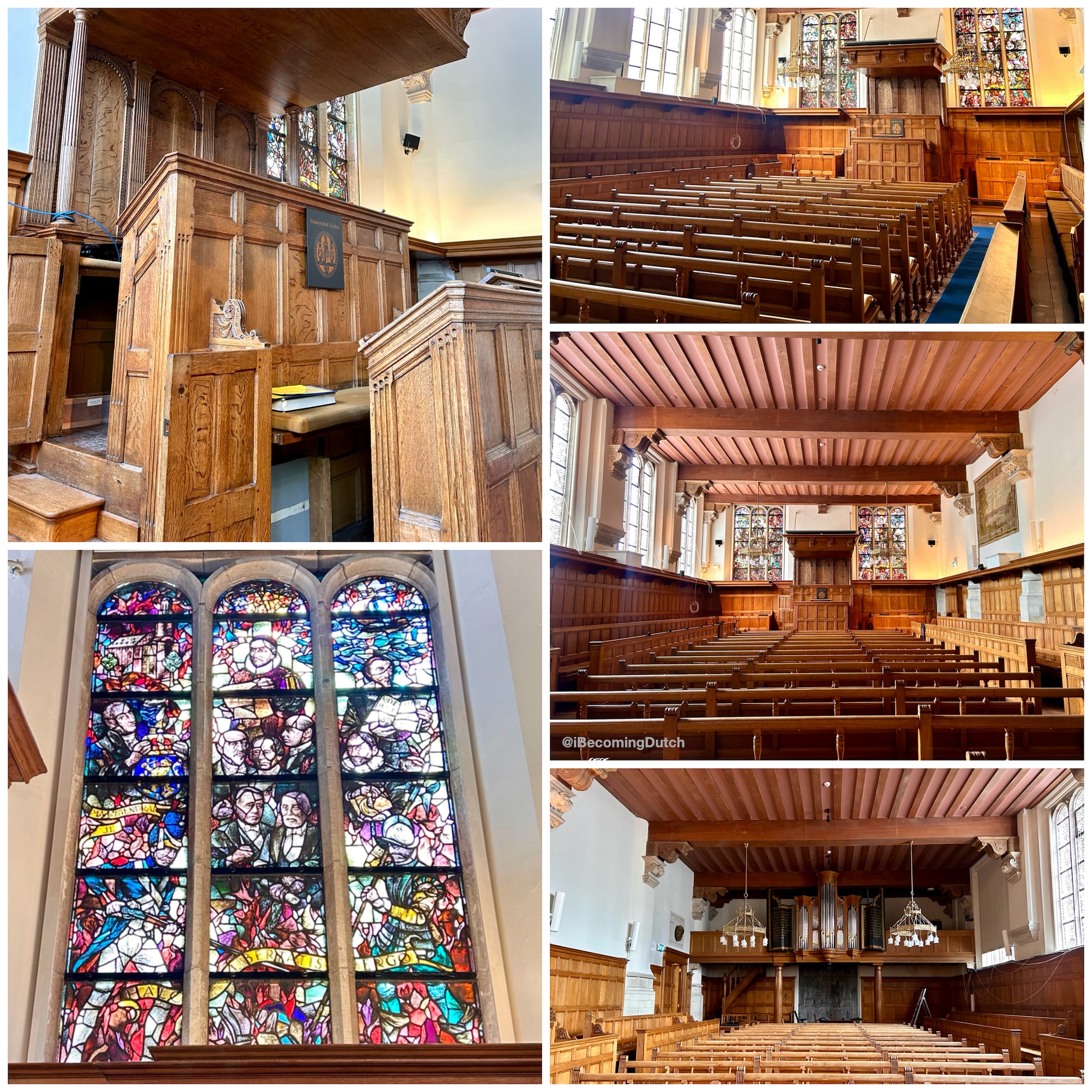
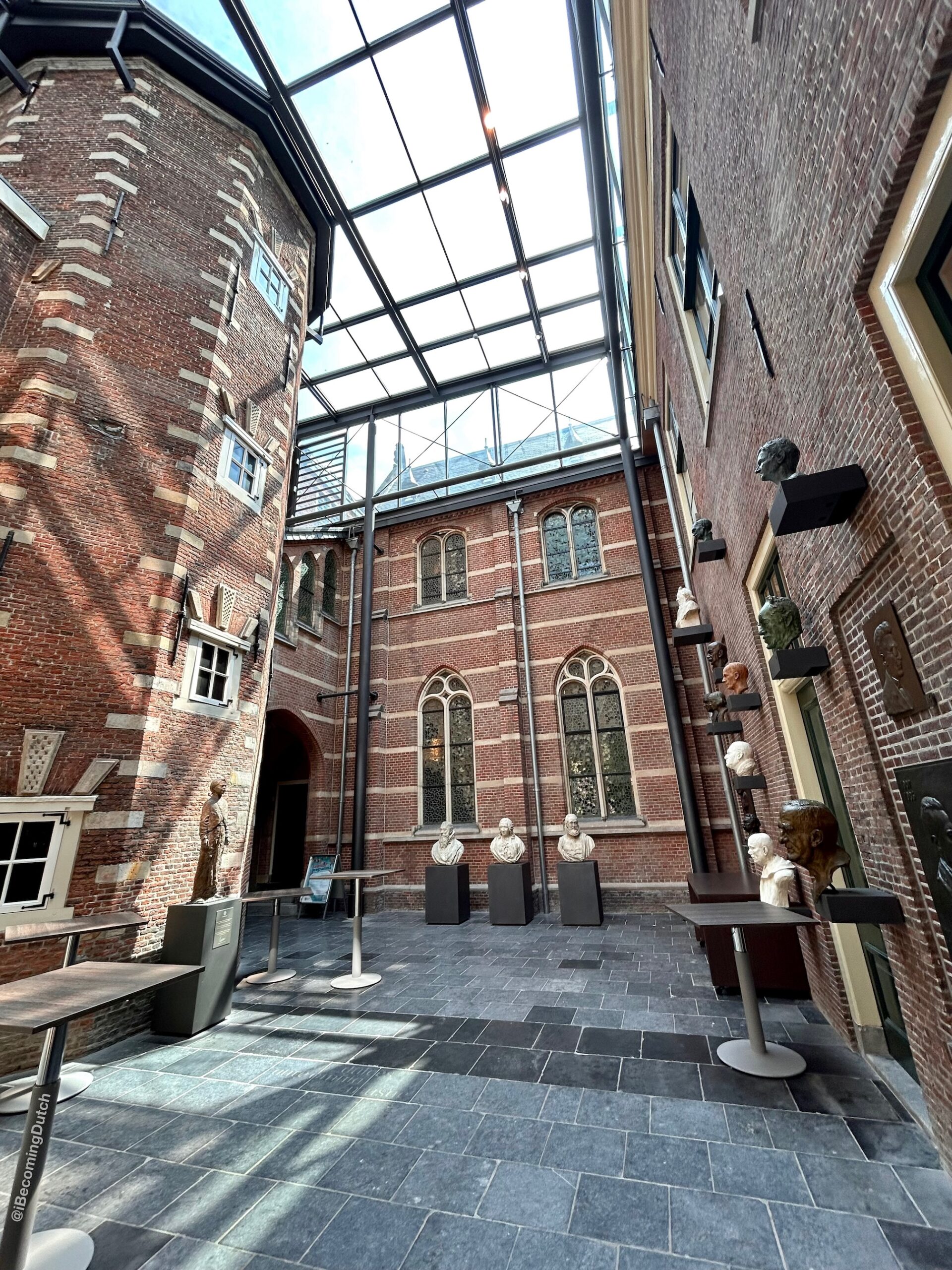
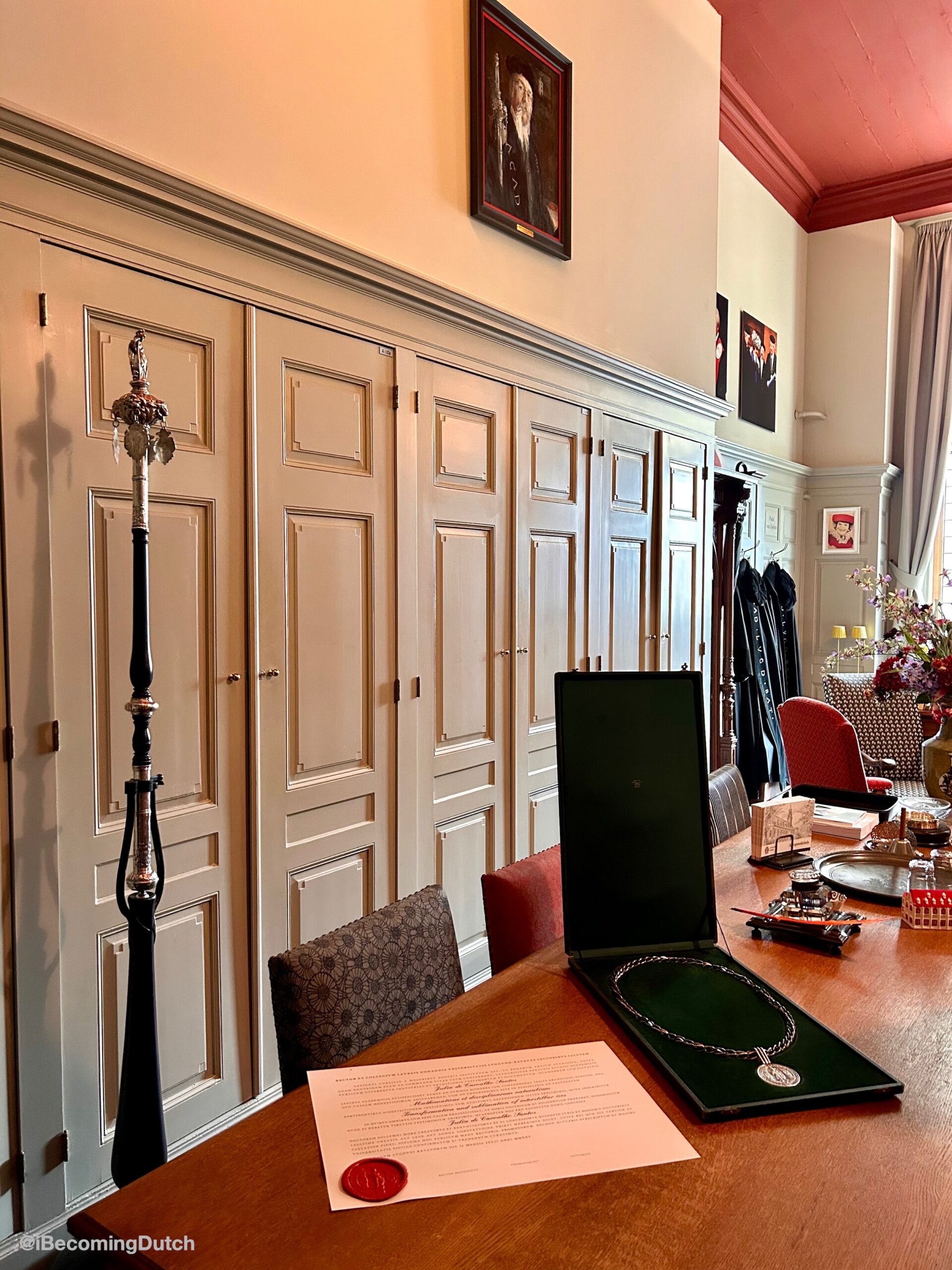
Leiden University’s Academy Building is adjacent to the Hortus Botanicus, the oldest botanical garden in the Netherlands and one of the oldest in the world. From the main entrance, the Academy Building is the first building on the left.
If you are interested, look out for summer holiday programs or openings during the National Heritage Day every year in September.
13 September 2025 – https://www.omdleiden.nl/omd-monument/13-academiegebouw/
Address: Rapenburg 73. 2311 GJ Leiden.


